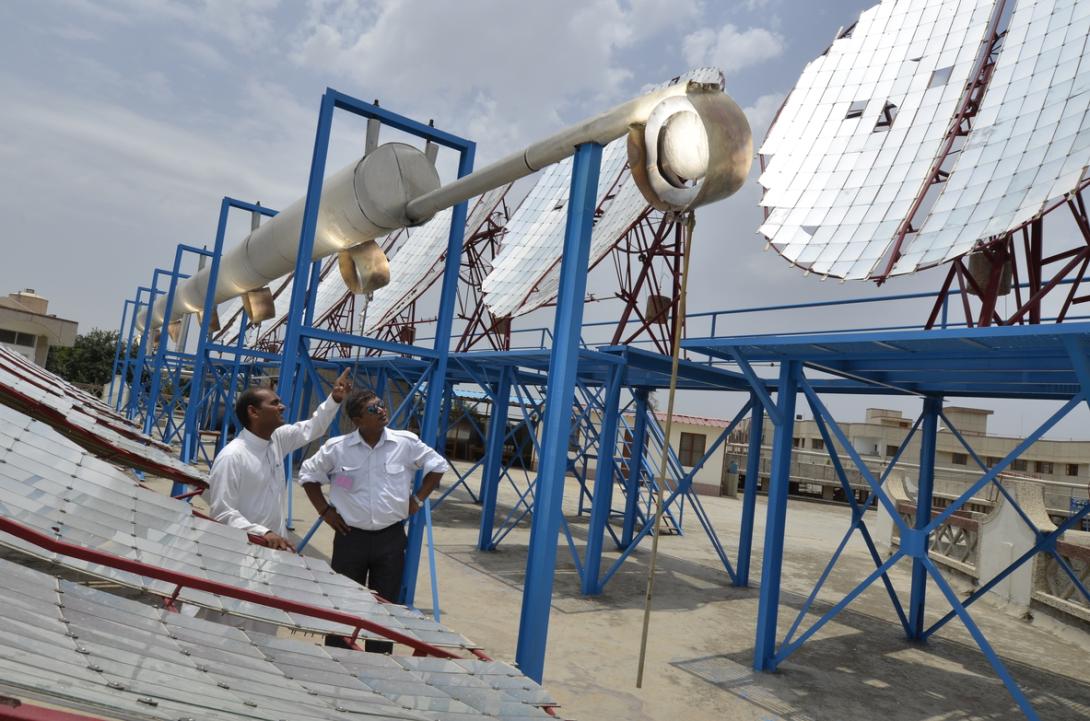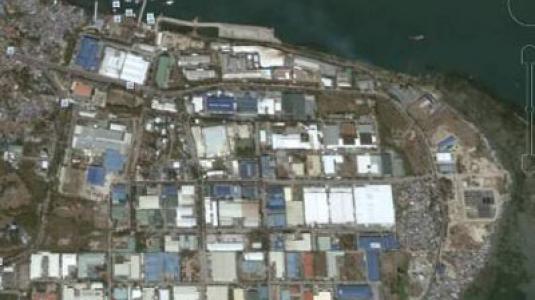Industrial Area Information Management System (IAIMS)

© GIZ, IAIMS
The implementation of the Sustainable Industrial Development approach in industrial areas requires comprehensive information. This includes technical data to be stored in a database (Industrial Area Information Management System) as well as geographical information to be stored and handled in a Geographical Information System (GIS).
Main features and components
The implementation of an Industrial Area information system is very time and resource consuming. Due to various reasons companies are often reluctant to provide data and information on their raw materials, resource consumption, outputs, waste production and environmental performance.
In order to tackle these obstacles the strategy of the EID project was to create additional value for the companies participating through the IS: All companies have to provide regular self-monitoring reports (see also baseline analysis toolkit) to the environmental authorities. Although the format of the report could be improved, it was decided to design the IS according to the format and the requirements of the self-monitoring reports provided by the environmental authorities and to include a printing function. So the companies can use the system to produce their reports. It was also agreed upon with the environmental authorities that they acknowledge the reports produced by the system. This feature was appreciated by the companies during the demonstration workshops.
The realization of the IS was also coupled to the establishment of Multipartite Monitoring Teams (MMT) in selected industrial areas. For the work of the MMT consolidated reports on the emissions and the environmental performance of the industrial areas were required. So PEZA and the environmental authority made it obligatory for the participating companies to deliver their self-monitoring reports via the IS.
Implementation and work steps
- Identification of existing data, reporting formats, requirements of the industrial area management, the environmental authorities and the companies,
- Design of the database according to the prevailing report format; database should provide as many standard data as possible (e.g. names of industrial areas, list of hazardous substances etc.) in order to avoid input mistakes.
- Design of the consolidated reports according to the requirements of the important stakeholders
- Execution of introductory workshops and consultations for the various user groups at the earliest possible stage in order to properly adapt the concept.
Lessons learnt
- Companies expect added value of an IS. Thus they are motivated to deliver the required information
- Input of data has to be as simple as possible; all options to avoid input mistakes have to be implemented
- Early consultation and introductory user training helps to adapt the system to the specific requirements of the users
- Already existing information should be used as far as possible; avoid additional requirements to the companies
Requirements
Close cooperation between relevant stakeholders
Output
- Industrial Area Information System
- Self-Monitoring Reports of Companies
- Consolidated Reports on Industrial Area level
Downloads
Characteristics
Phase of intervention
Designing SIA, Master planning, Operating SIA, Management
Level of intervention
Park management
Regions
Asia
Countries
Philippines
Target groups
Company, SME, Industrial area management and operator, Municipality, Policy makers
GIZ project
Developing a Management Approach for Eco-Industrial Development in Philippine Economic Zones

